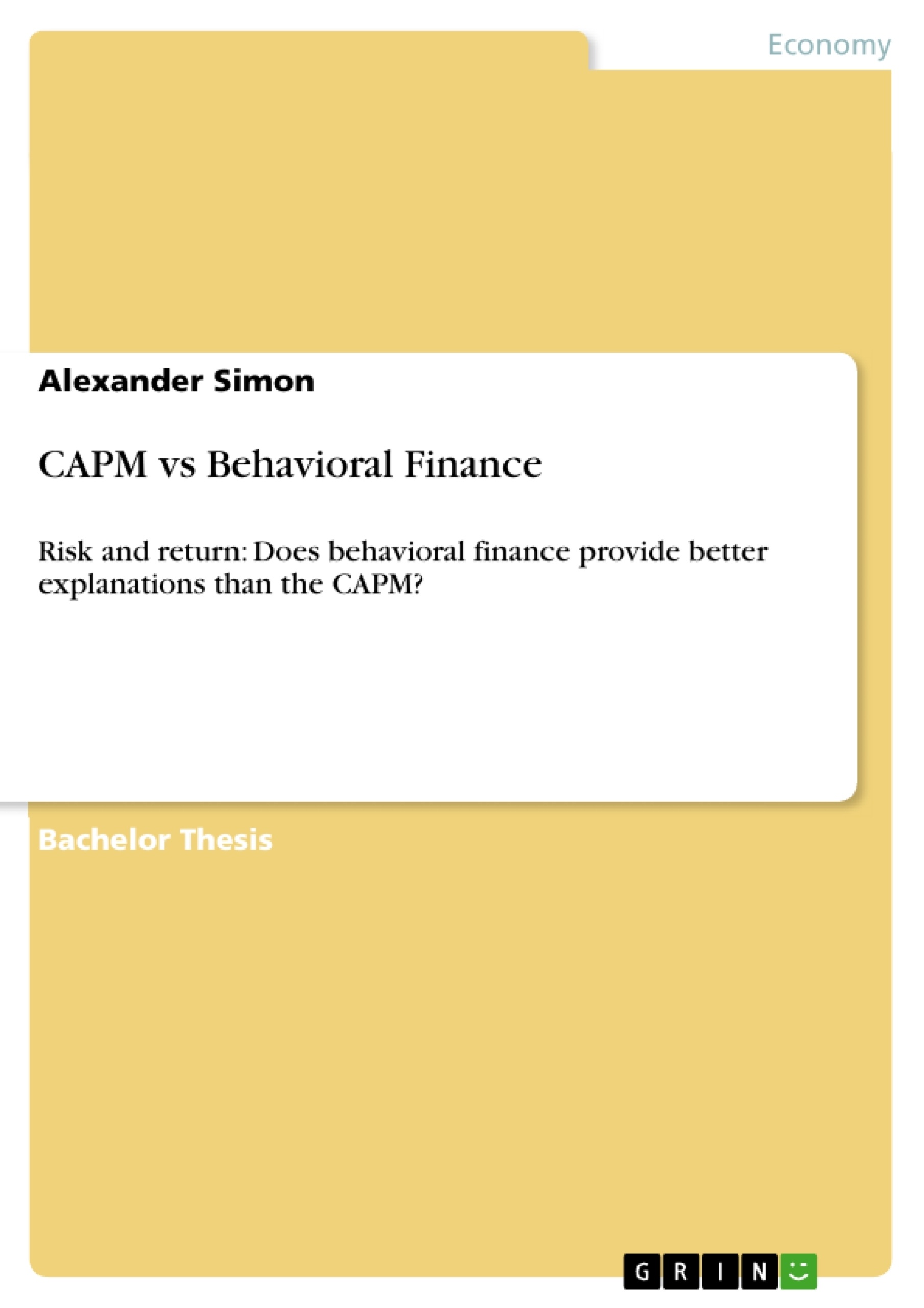“The chance to win is overestimated by all people. The chance to lose is underestimated by most people.” was already formulated by the moral philosopher and famous economist Adam Smith in his book “Wealth of Nations” in 1776. Two centuries later the behavioural economist Daniel Kahneman confirmed the notion that in situations with uncertainty people are inclined to biased decision-making. Actual tests of the CAPM on stock data confirmed that the market premium as a single factor may be insufficient to explain stock returns completely. Stambough (1982) among many others found a positive relation between beta and average return, however, it was “too flat” and the intercept was greater than a risk-free bond1. Other
effects were observed that could not be explained by the market premium alone; these “anomalies” such as the size factor2, book-to-market (“BTM”) factor3 and momentum factor4 among others led to the development of more extensive models. These models were in some respects more accurate than the CAPM in predicting future returns;
however, it remained unclear why these factors actually matter.
However, behavioural finance is no magic bullet for valuation of risk and predictability of returns. Although behavioural finance may explain the occurrence of factors relating to size and type of the firm, it does not provide accurate estimation techniques to enhance return predictability. Moreover, Beechey et al. (2000) underlines 33 The Institute of Behavioral Finance 20 that EMH still validates as a reasonable starting point for tests and research. Furthermore 80% of managers still use the CAPM to calculate the cost of equity capital
(Brav et al., 2005). In order to capture the “real” world, however, behavioral finance explains many anomalies, which were then incorporated in multifactor models. Despite the importance of the CAPM as a milestone in financial theory, these multifactor models
have been more accurate in predicting returns, and tend to be superior to a single-factor model.
Table of content
1. Introduction
2. The CAPM and the Efficient Market Hypothesis
3. Evidence of CAPM Anomalies
4. Modern Finance: Alternative Asset Pricing Models
4.1 Inter-temporal Asset Pricing Model - ICAPM
4.2 International Asset Pricing Model - IAPM
4.3 Multifactor Asset Pricing Models: Fama-French and Carhart
5. Influence of Psychology on Risk and Return
5.1 Prospect Theory
5.2 Heuristics, Biases and Emotions
5.3 Irrationality and Overreaction
6. Behavioral Finance versus CAPM.
7. Conclusion
8. References
- Arbeit zitieren
- Alexander Simon (Autor:in), 2007, CAPM vs Behavioral Finance, München, GRIN Verlag, https://www.grin.com/document/196571
-

-

-

-
Laden Sie Ihre eigenen Arbeiten hoch! Geld verdienen und iPhone X gewinnen. -

-
Laden Sie Ihre eigenen Arbeiten hoch! Geld verdienen und iPhone X gewinnen. -

-
Laden Sie Ihre eigenen Arbeiten hoch! Geld verdienen und iPhone X gewinnen. -

-
Laden Sie Ihre eigenen Arbeiten hoch! Geld verdienen und iPhone X gewinnen. -

-
Laden Sie Ihre eigenen Arbeiten hoch! Geld verdienen und iPhone X gewinnen. -

-
Laden Sie Ihre eigenen Arbeiten hoch! Geld verdienen und iPhone X gewinnen. -

-
Laden Sie Ihre eigenen Arbeiten hoch! Geld verdienen und iPhone X gewinnen.

